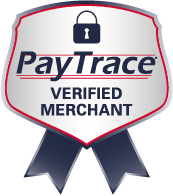What We’ve Learned from Creating Content Marketing Plans
By now, everyone knows that an effective content marketing plan is critical to generating leads for your business.
The challenge is that everyone does know this and that means it’s harder to stand apart and get noticed by your prospects.
Still, content marketing done well can mean more leads, more traffic and more business.
As a review, content marketing is:
- Providing essential information to your readers
- Establishing your company and yourself as someone who understands and can assist your audience with their questions and challenges.
Of course, like many simple concepts, content marketing is not necessarily easy.
Of those companies using content marketing to improve their marketing success, over half report that they fail at it.
While mistakes in content marketing are common, here are a few tips you can use to improve your chances of success:
1. BE CLEAR ABOUT YOUR AUDIENCE
Just as you do in your other marketing strategies, you need to be clear about who your audience is in order to target their interests
2. BUILD A SOLID FOUNDATION
If you’re new to content marketing, start by writing a few posts that can establish you as an expert. Focus on a segment in your field that you are confident with. Make sure your writing style is conversational, not preachy or “sales-y.”
3. WRITE QUALITY CONTENT
Quality isn’t about the fluidity of your writing style. Although clear writing is important, your readers want solid information about issues that concern them and their businesses.
How can you tell if you’re providing quality content?
The best sign your content is valuable is to watch how many readers stick with you, as well as by the growth in your readership. If your writing is informative, well-constructed and people-oriented, the number of your readers will rise, slowly but consistently.
4. MAKE SURE YOUR CONTENT IS FOUND
If no one finds your content, it doesn’t help you grow your business.
Here are four ways to help your content be found:
- Include links to your posts in your emails.
- Send a summary of your blog with links to the full article in a monthly newsletter.
- Put your website address or blog address on everything available: your email signature, your business cards, letterhead, PR releases, traditional advertising and more.
- Participate and Engage. Be active in the social and networking platforms your clients use. If your customers and clients are active on LinkedIn, participate in forums and answer questions posed by your groups. Leave helpful comments on other blogs that are being followed by your clients. Thank people who leave comments on your posts.
What’s your experience? What content lessons have you learned?

